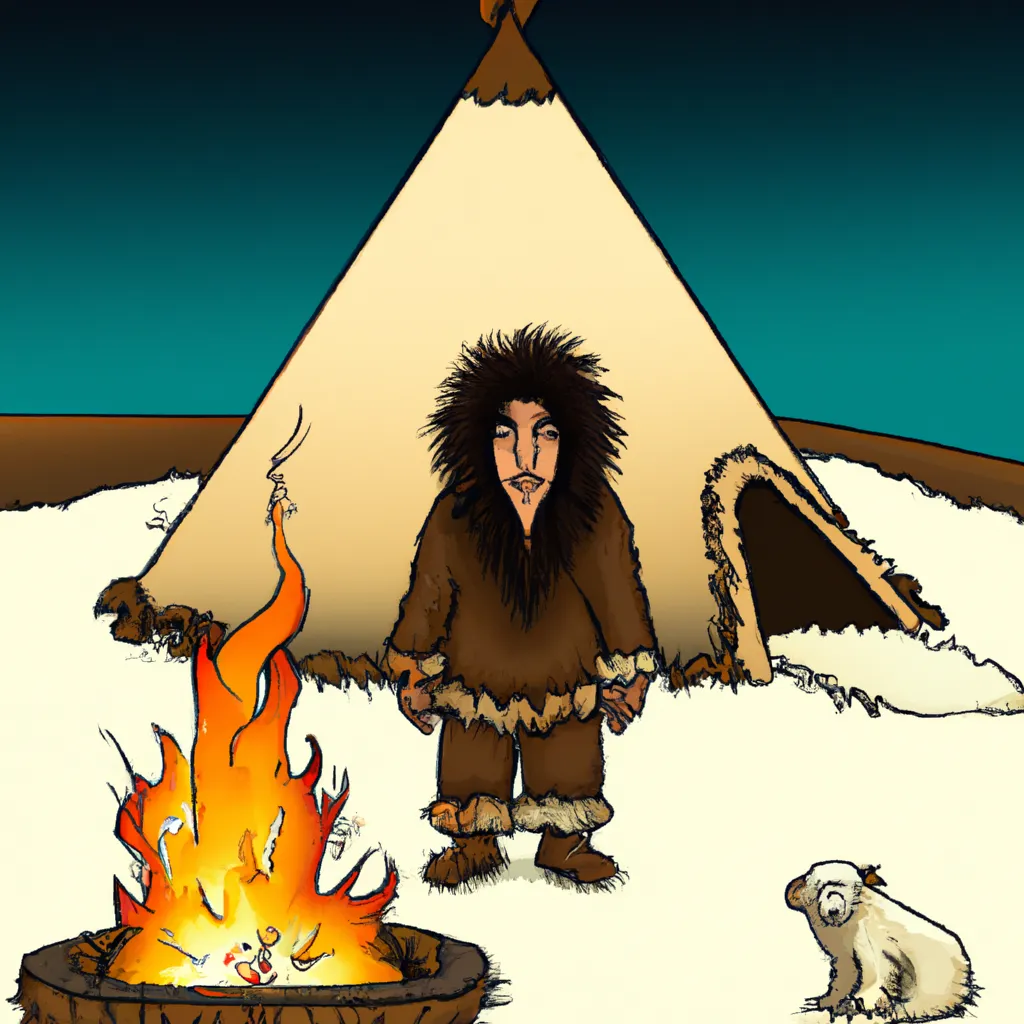Surviving the Cold - Traditional Techniques Used by Native Americans in the Dakotas

How Humans Survived in Bitter Cold Conditions Before Modern Times
Before modern times, humans had to rely on their knowledge and skills to survive in bitter cold conditions. Native Americans, particularly those living in the Dakota's and other cold regions, developed various techniques and strategies to cope with extreme weather conditions. Here are some of the ways they did it:
# Clothing
One of the most important aspects of surviving in cold weather is proper clothing. Native Americans made use of animal hides and furs to make warm clothing. They would layer their clothing to trap body heat and protect themselves from the cold. They also used materials like moss and grass to insulate their clothing.
# Shelter
Another important factor in surviving the cold was having a suitable shelter. Native Americans built their homes using materials like wood, bark, and animal hides. They would often build their homes partially underground to take advantage of the earth's natural insulation. Additionally, they used fire to keep their homes warm and dry.
# Food
Surviving in cold weather also meant having access to food. Native Americans were skilled hunters and gatherers, and they would hunt for animals like bison, elk, and deer. They would also fish and gather wild plants and berries. They would dry or smoke their meat to preserve it for the winter months.
# Transportation
Getting around in the bitter cold was also a challenge. Native Americans used snowshoes to walk on top of the snow, making it easier to hunt and gather food. They also used sleds and toboggans to transport goods and people.
# Community
Perhaps the most important factor in surviving the cold was community. Native Americans lived in close-knit communities and would work together to survive the winter months. They would share resources and knowledge, and help each other during times of need.
In conclusion, Native Americans in the Dakota's and other cold regions survived in bitter cold conditions by relying on their knowledge and skills. They developed techniques and strategies for clothing, shelter, food, transportation, and community that allowed them to thrive in even the harshest of environments.
How String Was Used in Survival Techniques in Cold Climates
String has been used by humans for thousands of years in various ways, including survival techniques in cold climates. Native Americans in the Dakota's and other cold regions utilized string in many ways to help them survive in bitter cold conditions before modern times.
One of the most common uses of string was for making warm clothing. Native Americans would use animal hides and furs to make clothing, and they would use string to sew the pieces together. They would also use string to tie the clothing tightly around their bodies to retain body heat.
String was also used to make snowshoes, which were essential for traveling through deep snow. The Native Americans would weave string between wooden frames to create a web-like structure that could support their weight on top of the snow. They would also use string to tie the snowshoes onto their feet.
In addition to clothing and snowshoes, string was used to create shelters. The Native Americans would use string to tie together branches and other materials to create a sturdy shelter that could protect them from the elements. They would also use string to tie blankets or furs over the shelter to provide extra insulation.
String was also used for hunting and fishing. Native Americans would use string to create traps and snares to catch small game, such as rabbits and squirrels. They would also use string to tie hooks onto fishing lines to catch fish through holes in the ice.
Overall, string was an essential tool for survival in bitter cold conditions before modern times. Native Americans in the Dakota's and other cold regions utilized string in many ways to help them stay warm, travel through deep snow, create shelters, and hunt for food. Today, string is still used in many of these same ways, although modern materials have replaced some of the traditional materials used in the past.
String in Survival Techniques
In bitter cold conditions, survival depended on resourcefulness and creativity. Native Americans in the Dakota's and other regions used a variety of techniques to stay warm, dry, and well-fed. One important tool in their survival kit was string.
String was used to create clothing, shelter, and tools. Animal hides were sewn together with sinew or plant fibers to create warm clothing. String was also used to create snowshoes, sleds, and other transportation devices. Shelter was constructed using branches, animal hides, and string to tie everything together.
In addition to its practical uses, string was also used for spiritual and cultural purposes. Dreamcatchers, for example, were made using string and were believed to ward off bad dreams. String was also used in traditional dance costumes and other ceremonial dress.
Today, modern materials have largely replaced natural fibers and sinew in survival situations. However, the importance of resourcefulness and creativity in survival remains. In emergency situations, string or other cordage can still be used to create shelter, clothing, and tools.
In conclusion, string played a vital role in the survival techniques of Native Americans and other cultures in bitter cold conditions. Its uses ranged from practical to spiritual and cultural, and it remains a valuable tool in emergency situations today.